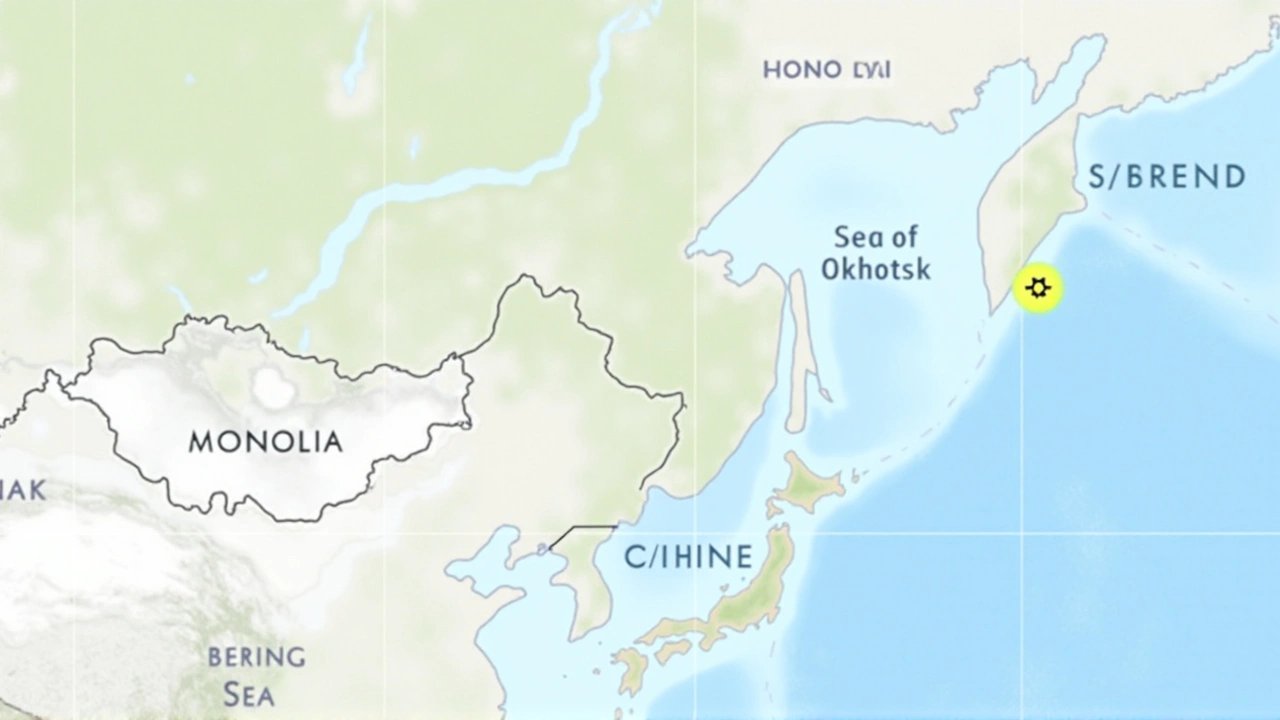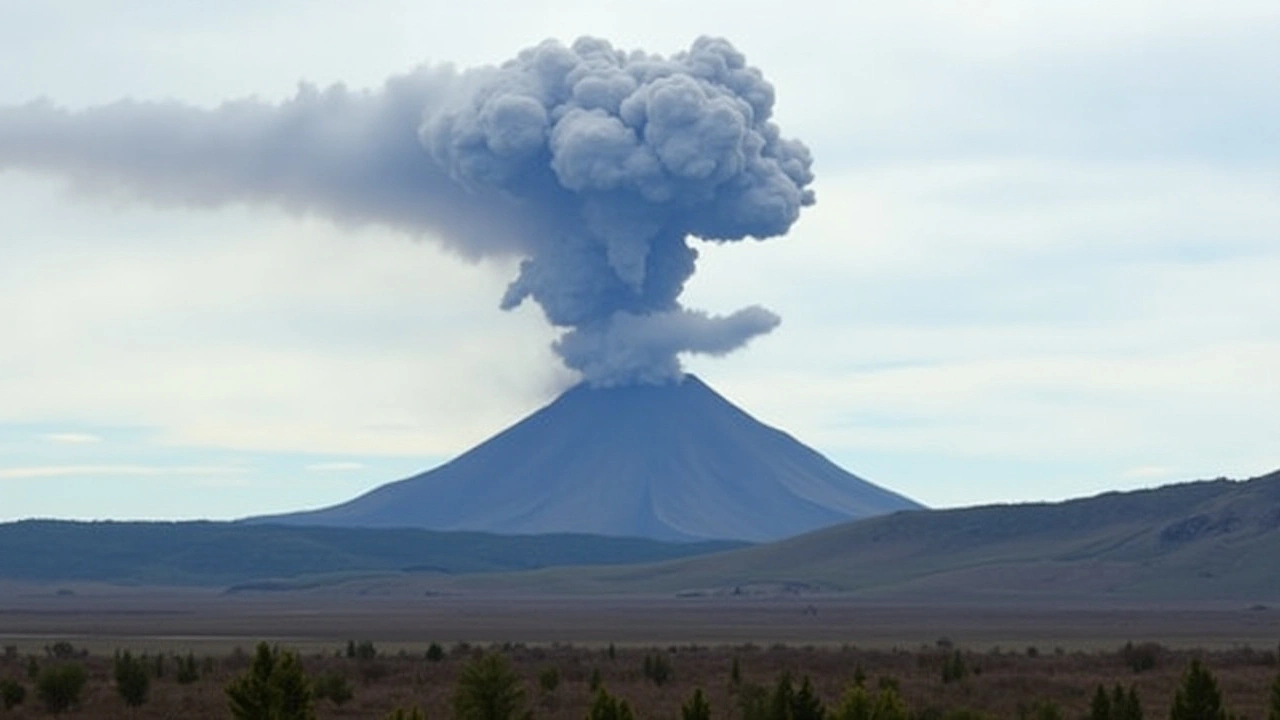Shiveluch Volcano in Kamchatka Erupts, Sending Ash Clouds Skyward
A significant natural disaster has unfolded with the eruption of the Shiveluch volcano in Russia's Kamchatka Peninsula, a region known for its geological activity. The Shiveluch volcano, one of the most active in Kamchatka, began spewing ash into the atmosphere. This event has raised concerns about potential risks to air travel and nearby communities. In response, Russian authorities and geological monitoring agencies are on high alert, closely observing the volcano to ensure public safety and minimize hazards.
The Shiveluch volcano is notorious for its frequent eruptions, with the most recent occurring after months of increased seismic activity. Experts have been closely monitoring the area, identifying signs that indicated an imminent eruption. Despite this, the sudden and violent nature of volcanic eruptions often leaves limited time for preparation and response. The ash clouds, reaching several kilometers into the sky, pose significant risks to aviation as airborne ash can damage aircraft engines and reduce visibility. Communities in the vicinity of the volcano are also at risk from ashfall, which can contaminate water supplies and cause respiratory issues.
Concurrent 7.0 Magnitude Earthquake in the Pacific Ocean
Adding to the region's challenges, a powerful 7.0 magnitude earthquake struck the Pacific Ocean near the Kuril Islands, which are also part of Russia. The earthquake's epicenter was located at a depth of approximately 200 kilometers, somewhat mitigating its impact on the surface. However, the strong seismic activity serves as a reminder of the unpredictable and volatile nature of the Earth's geology in this area. The Kuril Islands, which lie between the Kamchatka Peninsula and Japan, are part of the Pacific Ring of Fire, a region known for its frequent earthquakes and volcanic activity.
The depth of the earthquake's epicenter played a crucial role in reducing the immediate effects on land. Shallow earthquakes often cause more destruction, whereas deeper ones, like this, tend to dissipate energy before it reaches the surface. Nonetheless, the seismic waves were felt in nearby regions, prompting authorities to issue alerts and ensuring that emergency services were prepared to respond to any potential aftermath.

Geological Significance and Continuous Monitoring
The simultaneous occurrence of a volcanic eruption and a significant earthquake highlights the dynamic and interconnected nature of geological processes in the region. Kamchatka, along with the Kuril Islands, sits on the convergence of several tectonic plates, including the Pacific Plate and the North American Plate. This tectonic interaction is responsible for the frequent seismic and volcanic activity observed in the area.
Geologists and volcanologists emphasize the importance of continuous monitoring and preparedness in such regions. Modern technology allows for real-time tracking of seismic activity and volcanic gas emissions, providing early warning signs of potential eruptions or earthquakes. This information is crucial for disaster preparedness and response, allowing authorities to make informed decisions that can save lives and mitigate damage.
Impact on Local Communities and Air Travel
While the immediate threat to human life appears to be low, the ongoing situation requires vigilance. For communities near the Shiveluch volcano, ashfall can disrupt daily life, affecting agriculture, water quality, and health. Residents are advised to stay indoors and use masks to protect themselves from inhaling ash particles. Local authorities are coordinating with emergency services to ensure that evacuation plans are in place if the situation worsens.
In terms of air travel, airlines operating in the vicinity are rerouting flights to avoid the ash cloud. Ash particles can cause severe engine damage, and therefore, international aviation safety protocols mandate avoiding ash-contaminated airspace. Passengers should expect potential delays and disruptions as airlines prioritize safety over convenience.

The Reminder of Earth's Unpredictable Nature
The eruption of Shiveluch and the earthquake near the Kuril Islands serve as a stark reminder of the natural forces that continuously shape our planet. These events underscore the need for robust geological monitoring systems and preparedness measures to handle such incidents. They also highlight the importance of scientific research in understanding and predicting geological events, which can have far-reaching impacts on communities and economies.
As the situation continues to develop, the global community watches closely. The resilience of the affected regions will be tested, but with the right measures and timely response, the risks can be managed. This dual occurrence of a volcanic eruption and a significant earthquake is a powerful illustration of Earth's dynamic nature, and it prompts us to remain vigilant and prepared for whatever challenges lie ahead.


Vijay Paul
August 21, 2024 AT 05:01The Shiveluch eruption is a stark reminder of how fragile our infrastructure is when nature decides to flex its muscles. Ash clouds don't care about flight schedules or supply chains. It's terrifying how quickly a calm region can turn into a hazard zone. I hope the monitoring systems are robust enough to give people real-time alerts - not just after the fact.
RUPESH BUKE
August 21, 2024 AT 12:29Chirag Kamra
August 21, 2024 AT 16:19Ramesh Velusamy
August 21, 2024 AT 21:25Sushil Kallur
August 23, 2024 AT 08:23I’ve visited Kamchatka once. The silence there, before the rumbling, is unlike anything else. You feel the earth breathing. It’s humbling. I’m glad the authorities are monitoring closely, but I also worry about the cultural impact - indigenous communities who’ve lived with these cycles for centuries often get left out of the official narratives. Their knowledge matters too.
Chandni Solanki
August 23, 2024 AT 16:48